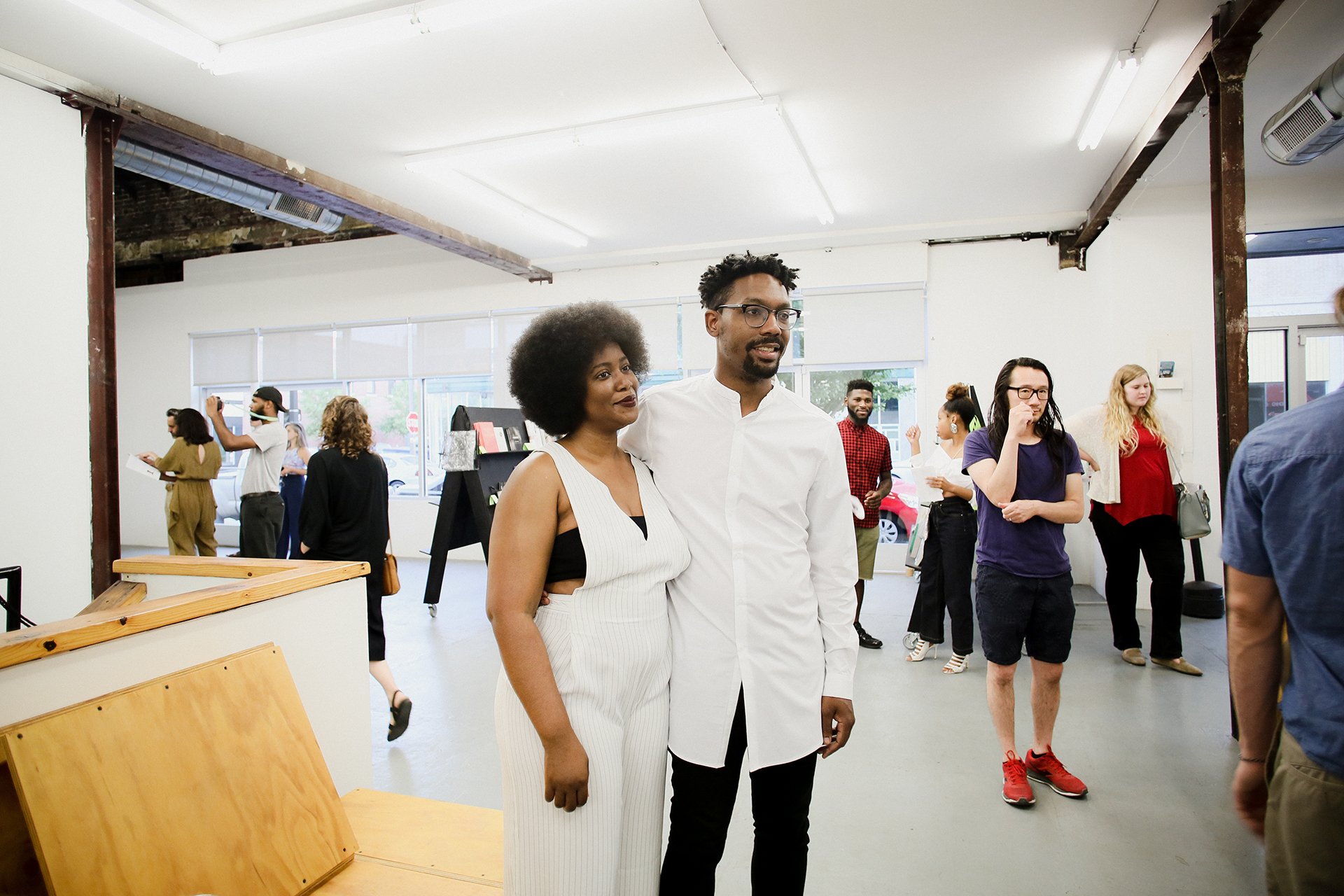You’ve heard the statement before: Blackness is not a monolith. It stands as true in life as it should in art, but isn’t always acknowledged in that same space.
Throughout history, art has been the silent tool in addressing racial, class, and socio-political strifes. It’s additionally been used to combat hierarchies enforced by those in power by giving the marginalized a place to be seen and heard. In the act of all of this, the idea of blackness being more than the “oppression” has often been overlooked. Artists like St. Louis-born Damon Davis, a documentary film-maker best known for his short film around the Ferguson Protests, Whose Streets?, has long since been attempting to change that.
“We shouldn't just have our feet to the ground, always chronicling and transcribing the world around us. We need to be able to imagine the world as we want to see it,” he tells me in a joint conversation with Black Lives Matter co-founder Patrisse Cullors-Bignac—an artist herself. “It can’t solely be based on anger because you’ll burn out.”
For three years now, Davis has been using western anxieties and obsessions with blackness to create worlds where gods of color can reclaim an identity through the supernatural. And in response, cultural initiatives like Black Lives Matter have been teaming up in joint efforts with artists like Davis to steer greater conversations in the ways that blackness can be symbolized in art; not just through pain and trauma, but through strength.
In advance of his afro-surrealism exhibition, Darker Gods in The Garden of The Low Hanging Heavens, making its debut at the Art Basel next week. We took the time to talk Davis and Cullors about art, and the roles they often play as disruptions and forms of therapy.
Damon, you’re obviously multitalented, from music to film. But when did your more surrealist-based art become this outlet for you?
Damon Davis: I’ve always been into the surrealist art scene, especially in the world of film like in the case of Guillermo del Toro, or even before when it was Terry Gilliam’s work and his 80s outlandish style. The thing for me though, is that I just never saw anyone that looked like me in those spaces. So as I got older and acquired some skills, it became a natural thing. The last few years for me has been an alignment with black people and the pain around what we’ve been going through. But prior to that, it was already surrealist and far more out there. It was the nature of the climate we were living in, especially in the specific place where I lived in being St. Louis, Missouri, where we needed a more aggressive political form of artwork that could be used as a weapon. Now, what we also need is some joy-based work with a larger basis in the imaginative. I think that’s why the surrealist scene has been really moving, and I’ve been pushing back into that.

In saying all that, what do you hope audience take away from your art, Darker Gods, Damon?
Davis: I hope that when people of color see it, they can imagine themselves in a greater light. I hope it brings joy to people, and that it makes others uncomfortable. I’d like them to deal with their own internal shit, and how they view black people when they’re presented with a blackness on a larger-than-life level. I hope they think and deal with it. I want people who don’t feel welcome in these spaces to feel welcome in this one, and I’m primarily talking about my people.
Follow Noel Ransome on Twitter.
Sign up for our newsletter to get the best of VICE delivered to your inbox daily.
This article originally appeared on VICE Canada.
from VICE https://ift.tt/2Q4HJUY
via cheap web hosting
No comments:
Post a Comment